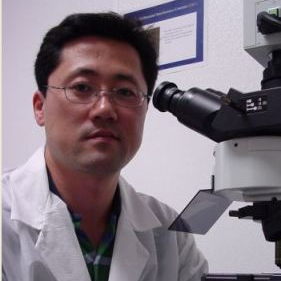Advances in Water and Wastewater Monitoring and Treatment Technology 2.0
A special issue of Water (ISSN 2073-4441). This special issue belongs to the section "Wastewater Treatment and Reuse".
Deadline for manuscript submissions: closed (28 February 2022) | Viewed by 19437
Special Issue Editors
Interests: advanced oxidation processes; photocatalysis; toxins; contaminants of emerging concern; nutrients recovery; water treatment
Special Issues, Collections and Topics in MDPI journals
Interests: water treatment; water management; advanced oxidation processes; photocatalysis; membranes; physico-chemical processes; biological treatment; clean technologies; energy and water use; sustainable production
Special Issues, Collections and Topics in MDPI journals
Interests: health-related water microbiology: Physical removal and inactivation of waterborne pathogens and rapid detection of infectious microorganisms; microbial ecology: Development of microbial source tracking markers and microbial community characterization; sustainable energy saving biological treatment processes: Microbial electrochemical (MEC) technologies
Special Issues, Collections and Topics in MDPI journals
Interests: smart water and wastewater treatment and management; water quality monitoring sensors; renewable energy production from waste
Special Issues, Collections and Topics in MDPI journals
Interests: photocatalysis and engineering of solar photoreactors; mathematical modeling of solar photocatalysis; advanced oxidation processes in environmental applications
Special Issue Information
Dear Colleagues,
Water quality monitoring, water contamination, and water treatment are topics of great importance nowadays, due to the presence of different organic/inorganic environmental contaminants such as naturally formed toxins, pesticides, personal care products, and heavy metals that cause adverse effects to the health of the environment, animals, and humans. Due to water scarcity, it is essential that resources for clean potable water are secured. In order to fulfill our role as environmental engineers in solving these problems, it is of great importance to compile the wealth of information from experts in the field of water quality monitoring and water treatment. Last year, we successfully closed the SI “Advances in Water and Wastewater Monitoring and Treatment Technology 1.0” with 17 papers, and we still eager to document more recent research data on technologies for monitoring, controlling, and removing pollutants in water and wastewater. As consequence, we are again collecting papers on the current water monitoring and treatment technologies.
Dr. Changseok Han
Dr. Daphne Hermosilla Redondo
Dr. Hodon Ryu
Dr. Woo Hyoung Lee
Dr. Miguel Angel Mueses
Guest Editors
Manuscript Submission Information
Manuscripts should be submitted online at www.mdpi.com by registering and logging in to this website. Once you are registered, click here to go to the submission form. Manuscripts can be submitted until the deadline. All submissions that pass pre-check are peer-reviewed. Accepted papers will be published continuously in the journal (as soon as accepted) and will be listed together on the special issue website. Research articles, review articles as well as short communications are invited. For planned papers, a title and short abstract (about 100 words) can be sent to the Editorial Office for announcement on this website.
Submitted manuscripts should not have been published previously, nor be under consideration for publication elsewhere (except conference proceedings papers). All manuscripts are thoroughly refereed through a single-blind peer-review process. A guide for authors and other relevant information for submission of manuscripts is available on the Instructions for Authors page. Water is an international peer-reviewed open access semimonthly journal published by MDPI.
Please visit the Instructions for Authors page before submitting a manuscript. The Article Processing Charge (APC) for publication in this open access journal is 2600 CHF (Swiss Francs). Submitted papers should be well formatted and use good English. Authors may use MDPI's English editing service prior to publication or during author revisions.
Keywords
- water and wastewater treatment
- contaminants of emerging concern and priority pollutants
- water quality monitoring









